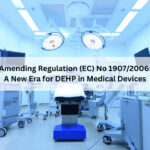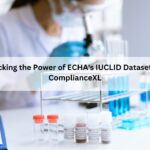Restriction of Hazardous Substances (RoHS) has been around in several industries for past several years and Companies have been putting in considerable effort and resources to comply with this regulation. With RoHS 2 being adopted, there has been extension in the scope of the directive and additional industry categories like medical devices and monitoring & control devices has come under its purview.
With RoHS 2 directive established, it is important to know what constitutes the documentation for the compliance. It is impractical for manufacturers to do their own chemical testing at homogenous material level to identify the presence and concentration of restricted chemicals. Instead the most prevalent and advised methodology is to work with the suppliers of the parts to manage compliance and compile evidences by collecting a set of technical documentation. This methodology is well accepted by industry and all enforcement authorities.
EN 50581:2012 Standard
European Union has published the 50581: 2012 standards to give clarity on the technical documentation required for the assessment of electrical and electronic products with respect to the restriction of hazardous substances. This standard reconfirms that the methodology of collecting technical documentation from manufacturers of parts is an acceptable mode of handling the compliance process.
What constitutes a technical documentation?
As per the standard, the technical documentation should contain a minimum of the elements outlined below:
- A general description of the product
(This should also assess in which product category it falls under- This evaluation will determine the applicability of certain exemptions available)
- Documents for material, parts and assemblies/sub-assemblies
- Information showing the relationship between technical documents and corresponding material, part, assemblies/sub-assemblies
- List of harmonized standards used to establish technical documentation
What tasks should a manufacturer do?
A manufacturer should do the following task to be and stay in compliance
- He has to determine the information needed for compliance
- Collect the information needed to declare compliance
- Evaluate the information with regard to quality and trustworthiness to include in technical documentation
- Maintain the technical documentation up to date and valid
Implementing each of this step requires clear understanding of process required in each of this stage. If you are in an industry which got included in RoHS recently, and implementing this process for the first time in your company, then you should put in necessary effort to understand applicability of the regulation for each of your product and then implement each of these steps to manage your RoHS 2 compliance process effectively.






